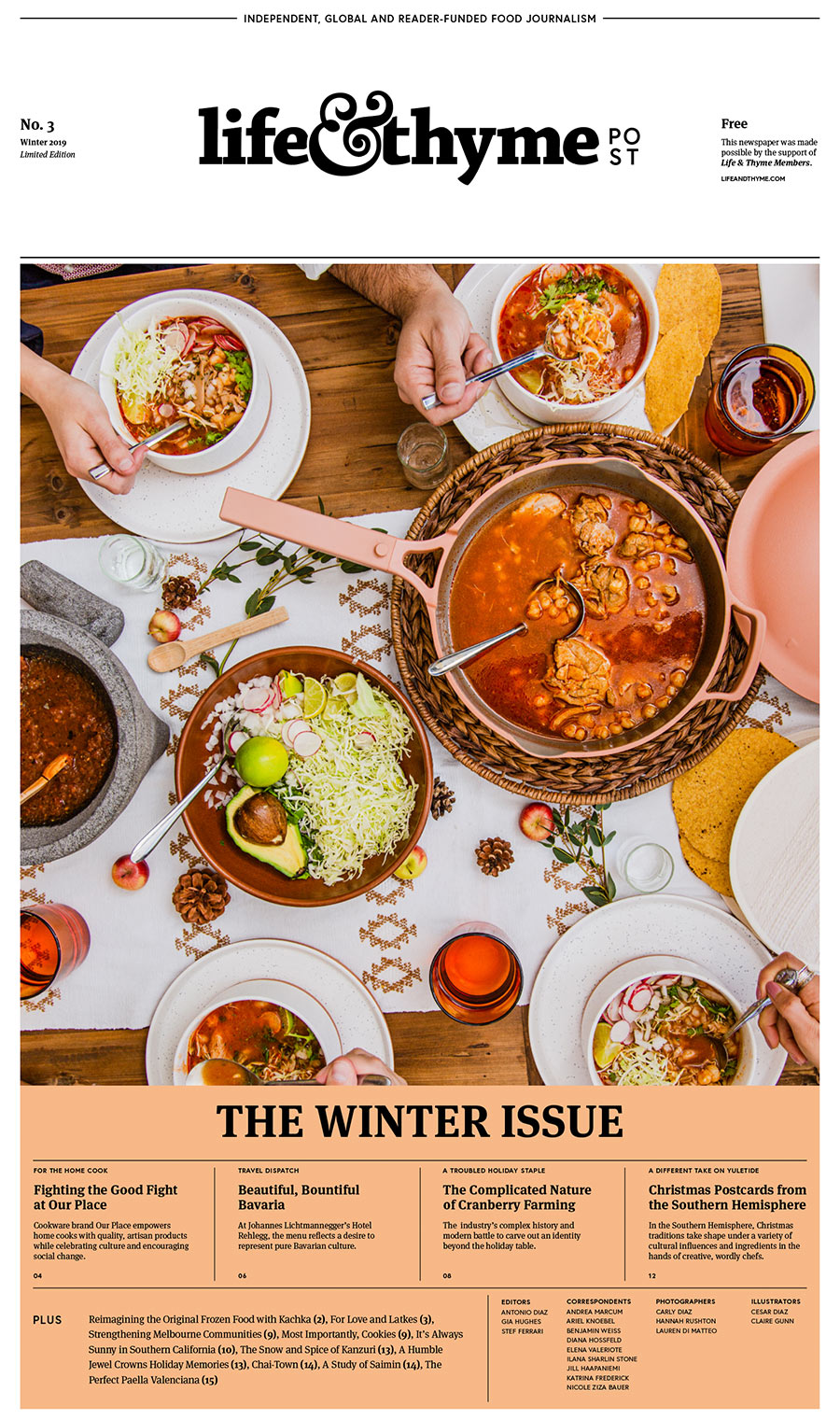
This story can also be found in The Winter Issue of Life & Thyme Post, our limited edition printed newspaper for Life & Thyme members.
The first time I realized saimin was something unique to Hawaii was on a family trip to Disneyland. I was nine. Much to our parents’ chagrin, my younger sister and I had zero desire to eat any of the foods the happiest place on earth had to offer and instead begged for flavors we were more accustomed to. In an attempt to placate us, they pulled into a Chinese restaurant and asked for a couple bowls of saimin. The woman behind the counter looked at us quizzically. Not only was saimin not on their menu, but she had no idea what we were even talking about. To me, saimin was the ultimate comfort food, one of the very first solid foods all children eat, the cornerstone of every kids’ menu, and, as I would later learn, a product of the unique cultural history of Hawaii.
At first glance, saimin looks like ramen with its kinky noodles and savory broth, but it doesn’t take long for the differences to rise to the surface. Where ramen is full of deep, unctuous flavors built with layers of ingredients and hours of simmering, saimin is far simpler. Its clear broth consists of a light shrimp or dashi base, and its noodles sit halfway between Japanese ramen and Chinese egg noodles—soft, springy and flavorful. In its most basic form, you’ll find it topped with a couple slices of pink and white kamaboko fish cake, a few pieces of sweet, pink-tinged char siu, and a sprinkling of green onions. Popular variations include wun tun min—saimin topped with pork-filled dumplings—and soupless, fried saimin cooked with thin slices of spam, char siu and cabbage. In most restaurants, a bowl of saimin will be accompanied by a small plate of Chinese hot mustard to be mixed with soy sauce and dipped into, similar to wasabi at a sushi bar.
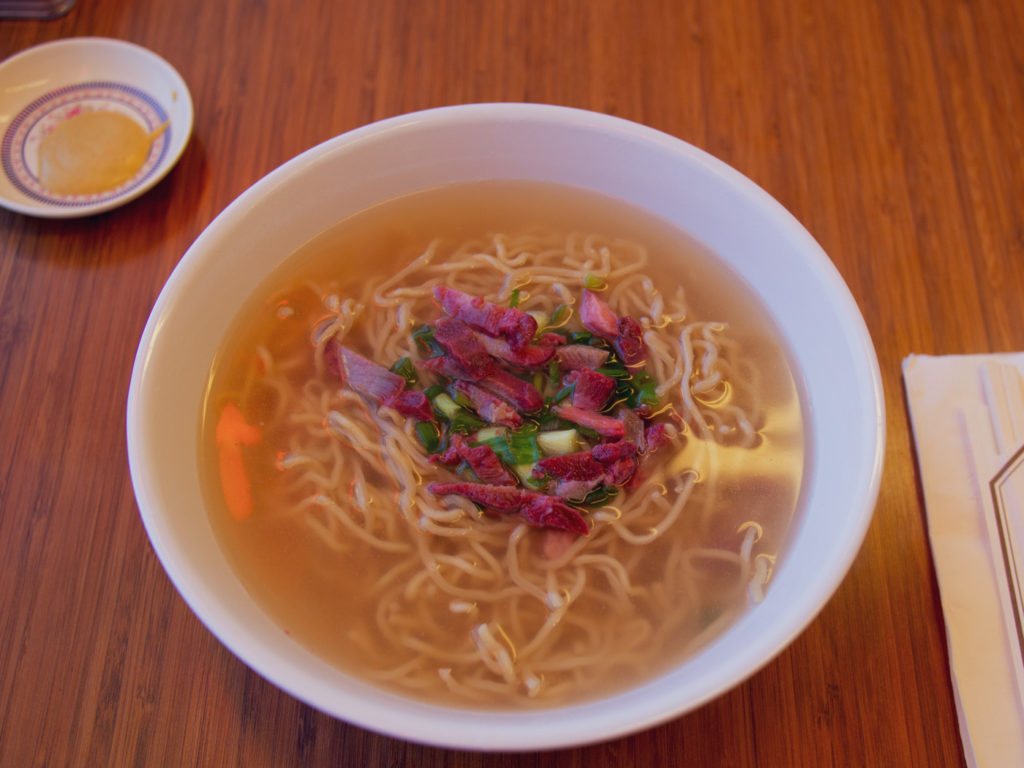
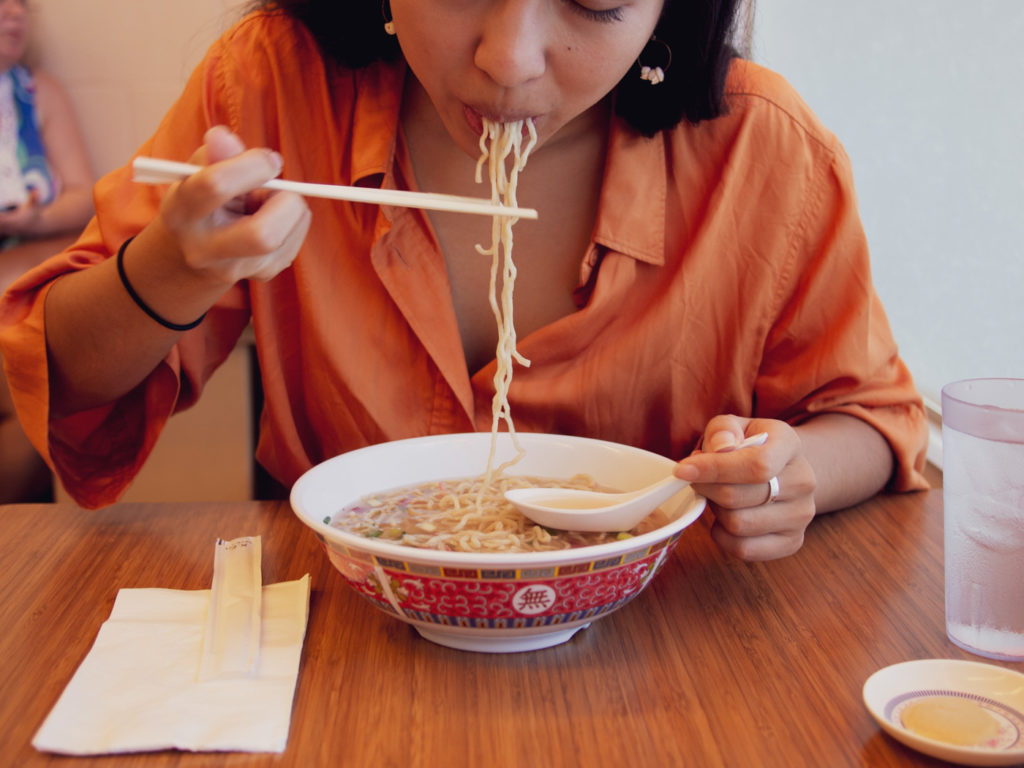
The word “saimin” comes from the Chinese sai (thin) and mein (noodles). But trying to claim its name origin makes it a Chinese dish is perhaps too narrow a view. Saimin was born from the so-called “mix plate” culture of Hawaii’s sugar plantations in the late-nineteenth century and draws influence from Chinese, Japanese, Okinawan, Portuguese and Filipino cuisine. The story goes that when the plantation workers came together to eat lunch, each of them pulling out home-cooked meals from their respective cuisines, they would trade bits and pieces, mixing flavors and cultures until one day saimin was born.
In the beginning, saimin was a cheap, simple dish just about anyone could throw together for a quick and easy bite. Boil some shrimp shells or kombu for the soup base, toss in a handful of noodles, and depending on what was growing in the garden, maybe seasonal garnishes as well. The first places that started selling saimin were little snack stands that catered to busy plantation workers. In the mid-twentieth century, saimin restaurants became a pathway to entrepreneurship for the children and grandchildren of the original plantation workers. Eventually, every neighborhood had at least one diner or fountain that featured saimin at the core of its menu.
While there aren’t as many saimin stands and restaurants as there once were, those that remain are cherished community mainstays. Palace Saimin in Kalihi opened in 1946 and maintains a loyal clientele of multi-generational families. Jane’s Fountain in Liliha has been in business for almost seventy years, and its vintage menu board and fully functioning jukebox might have you thinking you stepped back in time. Hamura’s Saimin Stand in Lihue, opened in 1952, sells eight hundred pounds of noodles daily to locals and visitors alike.

But dedicated saimin shops aren’t the only places you can get this warm bowl of comfort. Quick-cooking frozen saimin is a staple in every local family’s freezer, and almost every diner has it on the menu. Even McDonald’s has saimin—complete with kamaboko, char siu, and a small sheet of dried seaweed. In fact, saimin was the very first regional menu item McDonald’s ever offered.
Clearly, saimin is a pretty big deal here in Hawaii, and for most of its history, we’ve been content to keep it our little secret. But it seems as if that might be about to change. Over the last several years, various publications have run articles, stories and videos about saimin, giving this unassuming staple more time in the spotlight than ever. One of the most recent features is a saimin-focused film series produced by Zippy’s, a local fast-casual restaurant chain that serves a comprehensive cross-section of classic Hawaii cuisine. This series (aptly named Saimin Says) is a collaboration with Hawaiian Airlines and takes viewers on a multi-part tour through several of Hawaii’s most famous saimin spots with a cast of local chefs, introducing the dish to thousands of visitors to the islands.
I spoke with Zippy’s director of communications Daniel Ito to get a better idea about the sudden spike in interest in saimin. According to Ito, this attention may be due to the influence of a man named Hidehito Uki. Uki, the son of a noodle maker in Japan, arrived in Hawaii in 1980 with nothing more than a suitcase and a noodle machine to his name. Although he originally intended to seek his fortune making ramen noodles, he soon found that saimin was in higher local demand, so that’s what he made instead. Nearly forty years later, his company, Sun Noodle, is now a nationally-recognized brand with additional factories in California and New Jersey, a ramen innovation restaurant in New York, and distribution in several countries around the world. In recent years, Uki has acknowledged saimin’s central role in his success and has made it his mission to give back to the noodle that started it all by introducing saimin to the world.
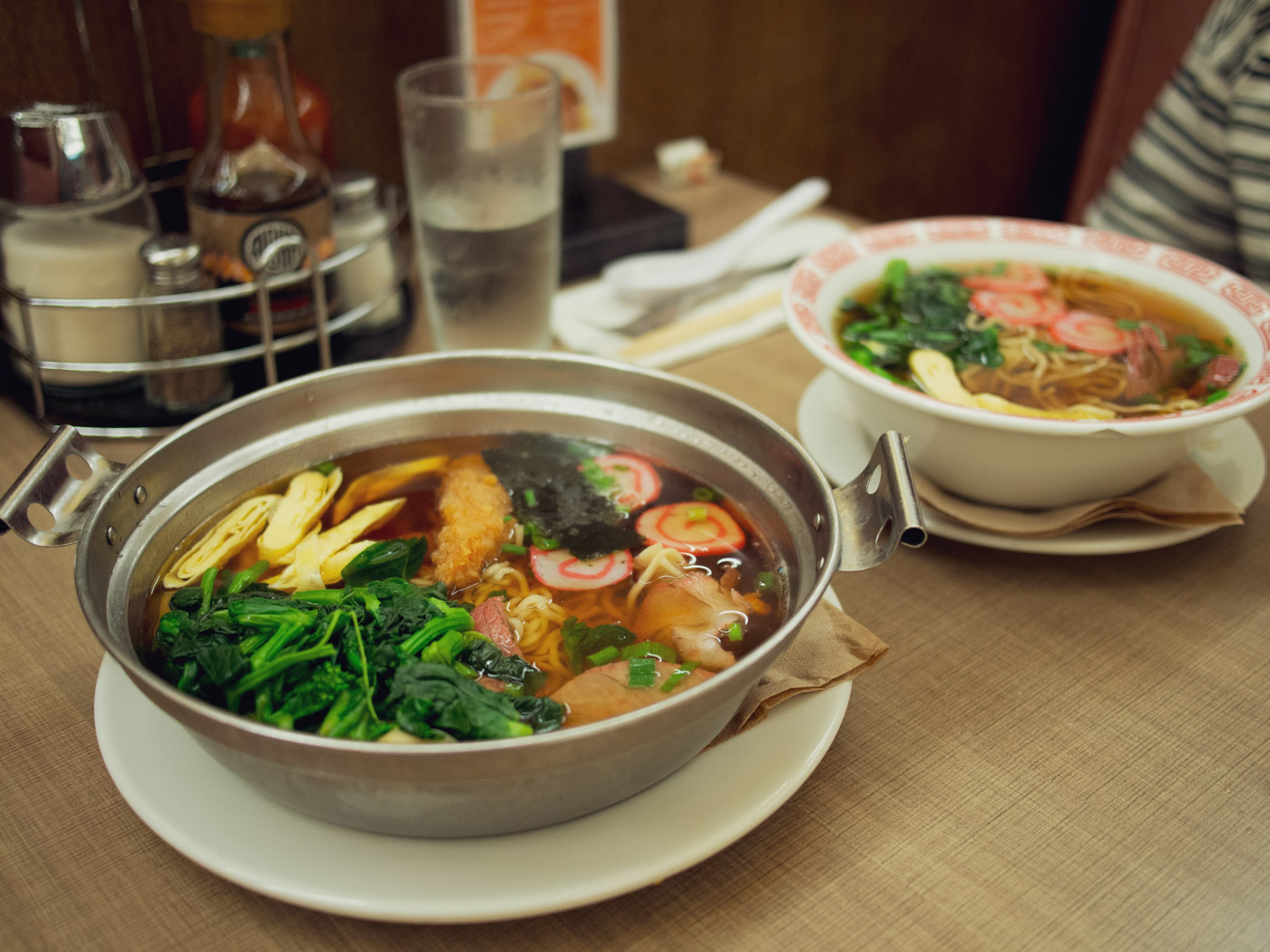
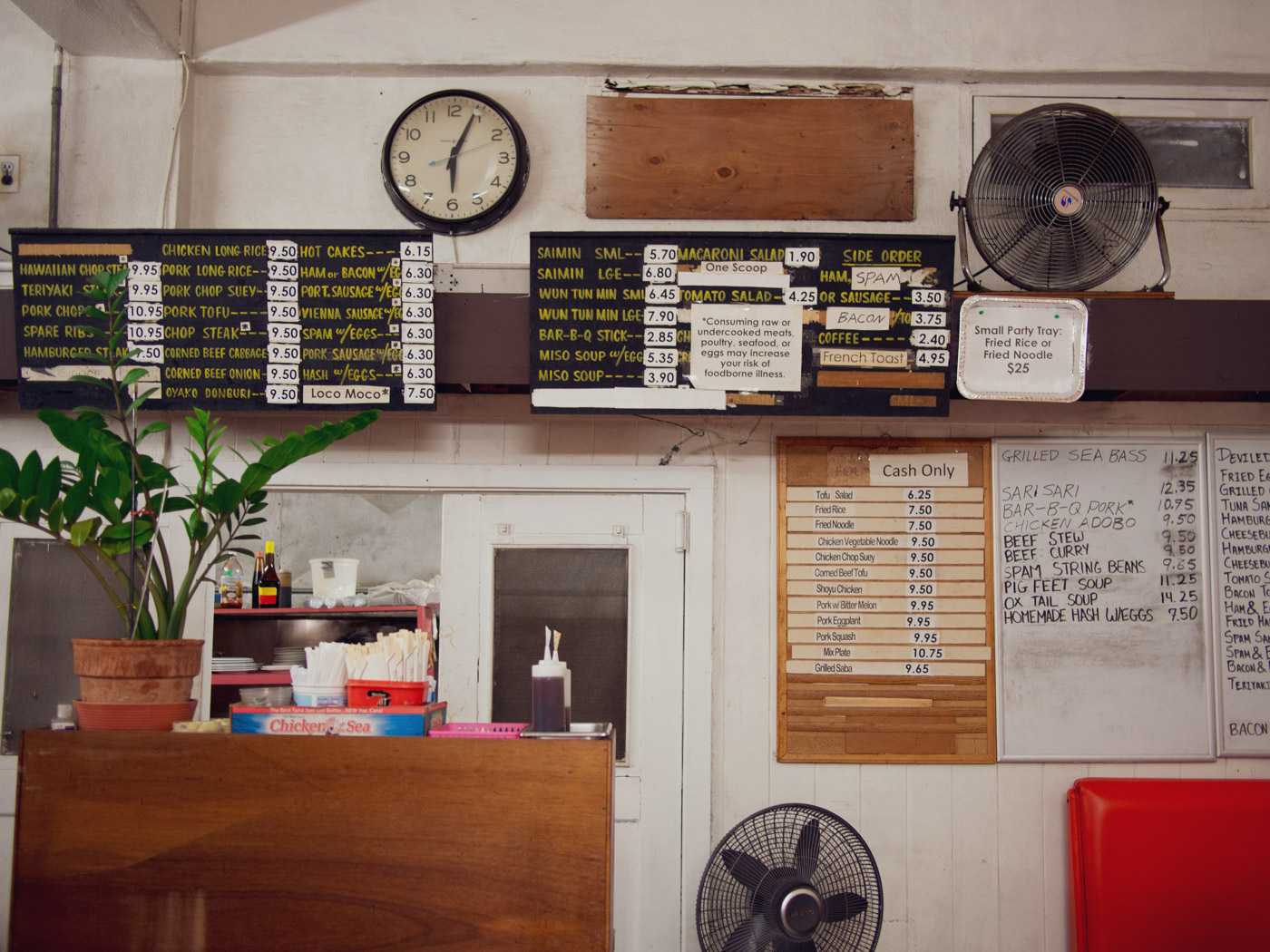
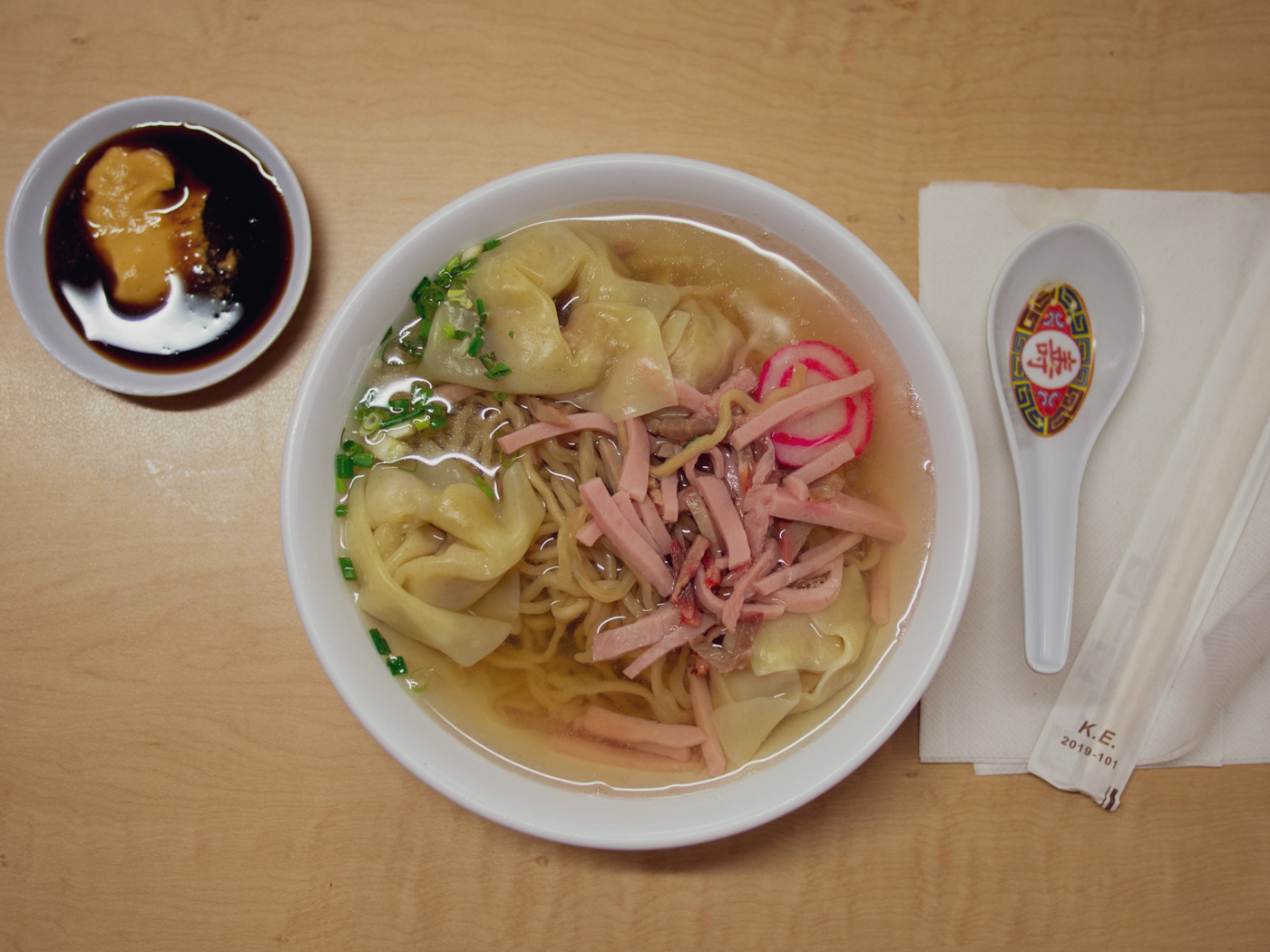
If any dish from Hawaii is going to be adopted by the world stage, saimin is a worthy candidate. In my conversation with Ito about Zippy’s role in promoting saimin to the world, he also gave me his view as a person of native Hawaiian descent, making a comparison to another dish making its way onto the world’s culinary stage. “Poke is a way of preparing any type of ingredient; it’s that chopped style,” he says. “When you [equate] poke with fish, that’s disregarding the culture and the way it was originally created.”
He refers to saimin as a melting pot of multiple cultures. “It takes in all of these different ingredients, and in that sense, it has an opportunity to be that dish that really defines Hawaii’s local, more modern culture,” he says. “It’s a modern interpretation of Hawaii as a melting pot of multiple ethnicities.”
And indeed, saimin has already seen significant changes, upgrades and embellishments to match the different palates here at home. Shiro’s Saimin Haven in Aiea has over sixty-five saimin options with multiple soup bases and toppings ranging from the traditional to the adventurous, including mochi, lumpia and hamburger. Many formal Chinese restaurants in Hawaii serve versions of saimin that look less like local-style saimin and more like a purely Chinese interpretation with thinner, eggier noodles. Modern Hawaiian restaurants like Moku’s Kitchen in Kaka’ako offer their take on elevated versions of saimin that include fresh, farm-to-table ingredients.
While saimin has traditionally been understood in Hawaii as the product of our plantation culture, at its core, it’s less about the particular pieces and more about the idea that different people came together to create something new. With its mild base and loosely defined parameters, saimin is ready for the global stage, and I can’t wait to see what happens next.





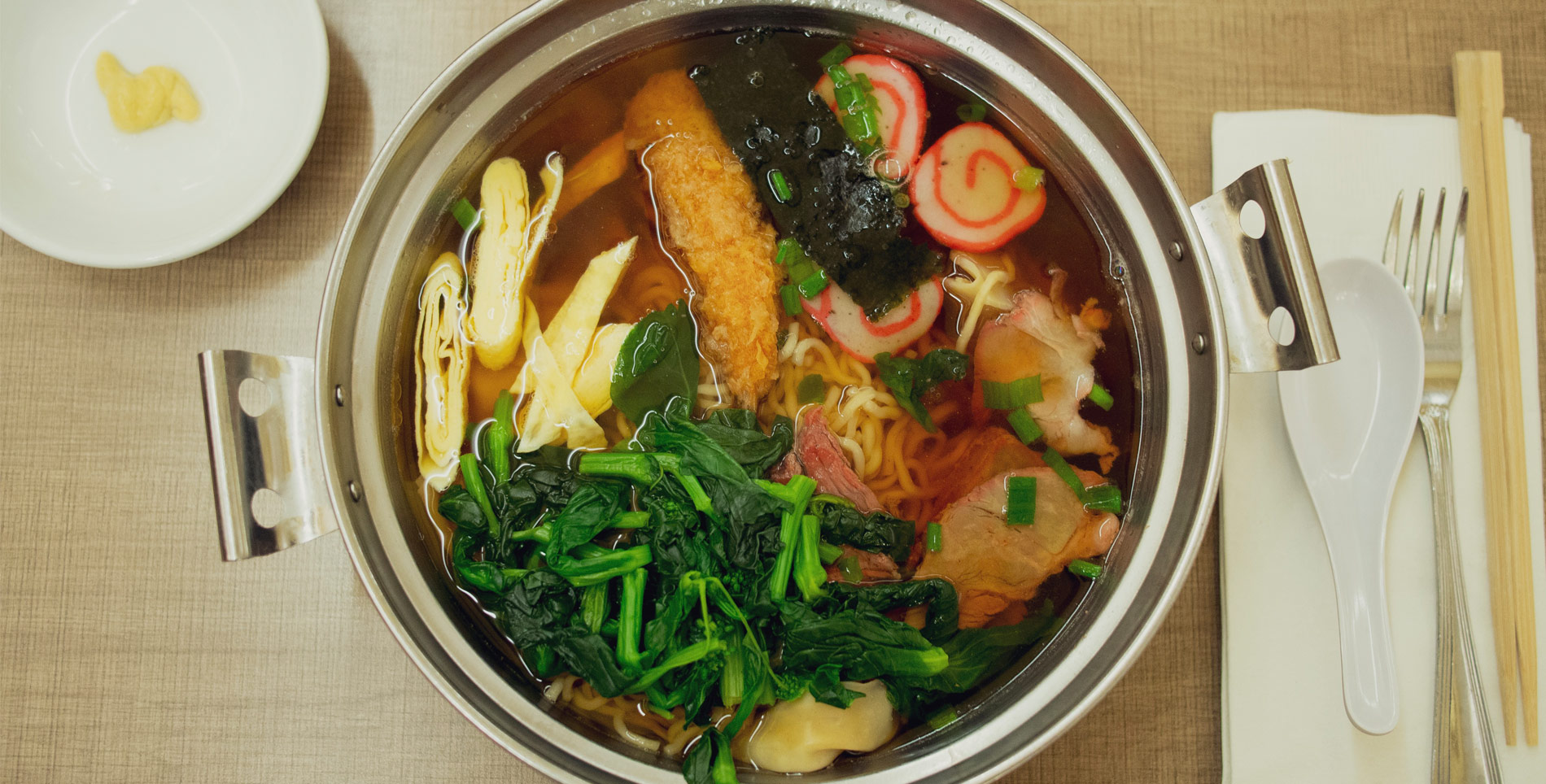

Our comments section is for members only.
Join today to gain exclusive access.